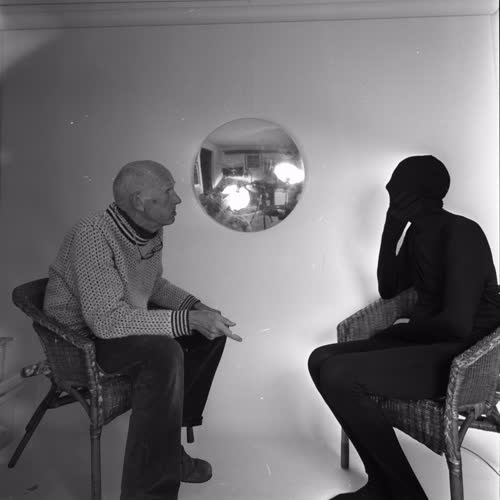
January 2024

Byung-Chul Han, in 'The Expulsion of the Other', especially in Chapter 12 (Listening), critiques contemporary communication as increasingly one-directional and transactional, reduced to an exchange of signals rather than a mutual act of listening. He argues that digital interaction, especially text-based communication, strips conversation of its full richness – the pauses, the tone, the weight of silence, the unspoken that shapes meaning. True dialogue, for Han, requires an openness to the unknown, an attentiveness to the other that resists immediate consumption or closure.
The composite of two self-portraits – one fully masked, the other exposed – suggests a dialectic between visibility and obscurity, between recognition and estrangement. By adopting characteristic poses, the morph-suited figure mimics and repeats, emphasizing how bodily presence itself carries communicative weight, independent of facial identity. This visual layering parallels Han's argument: in an era where digital exchange prioritizes speed and efficiency, the slow, reciprocal work of understanding–of listening, witnessing, and being fully present–risks being lost.